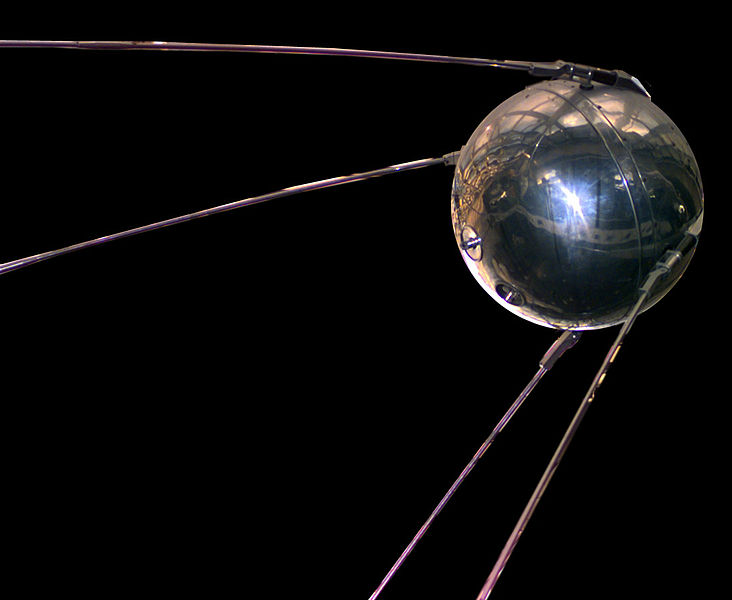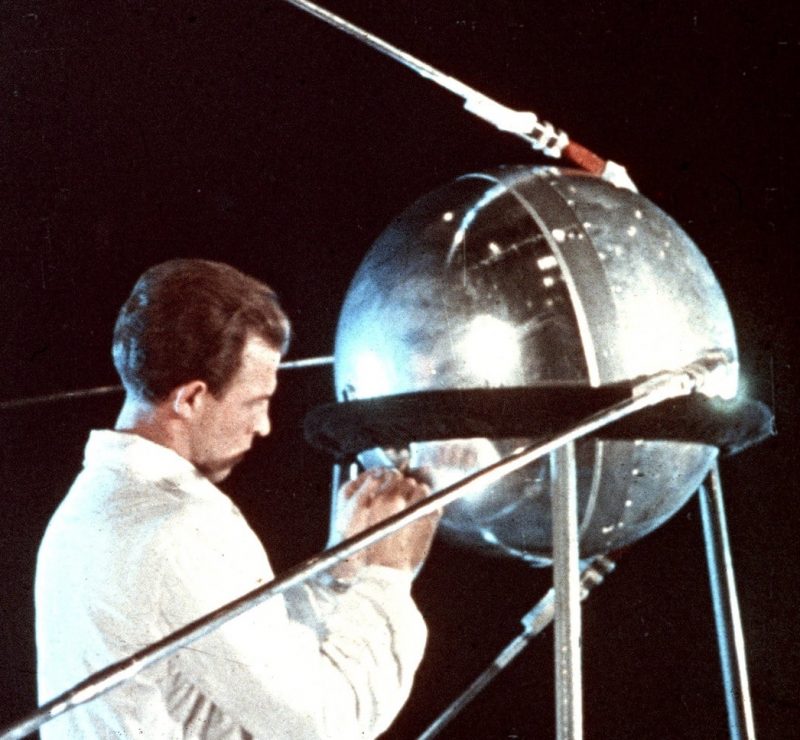
Sputnik surprised the world 65 years ago
October 4, 1957. On this date, the Soviet Union launched Sputnik I, the first artificial satellite to orbit the Earth. Consequently, many space historians say the Space Age began on this date.
Basically, Sputnik was a polished metal sphere made of aluminum alloy. Specifically, it was 23 inches (58 cm) in diameter – about the size of a beach ball – and weighed just 184 pounds (83 kilograms). Also it had four external radio antennae to broadcast radio pulses. And broadcast they did. Indeed, people around the globe heard Sputnik’s unassuming beep beep on the radio for 21 days in 1957.
By the way, do you want to hear it? Check out the video below.
Sputnik had several primary objectives
Furthermore, the pressurized sphere had five primary science objectives: test a process for placing an artificial “moon” into Earth orbit; provide information on the density of Earth’s atmosphere, calculated from Sputnik’s lifetime in orbit; test radio and optical methods of orbital tracking; determine the effects of radio wave propagation though Earth’s atmosphere; and check principles of pressurization used on Earth-orbiting satellites.
While Sputnik’s beeping was a remarkable accomplishment for the Soviet Union, it also led to what many assumed was Russia’s superiority in space. To this end, the world feared the Soviets’ now had the ability to launch satellites. More specifically, concern Russia could launch ballistic missiles carrying nuclear weapons to Europe and the U.S.
Next launch: The first living creature in space
After that, the next step was to place a living creature in space. So on November 3, 1957, the Soviets launched Sputnik II, this time carrying a much heavier payload, including a stray dog named Laika. As a matter of fact, they found Laika on the streets of Moscow just over a week before Sputnik II was set to launch. But, according to the BBC, Laika died within hours of launch from panic and overheating. Read more about Laika from Time.com.
As a result: The beginning of the space race
Naturally, Sputnik I and Sputnik II sent shockwaves around the world. And American political leadership scrambled to catch up. In the long run, that extra push resulted in the United States sending the first astronauts to walk on the moon, on July 20, 1969.

For a musical take on the sudden advent of the Space Age, by Leslie Fish.
Bottom line: On October 4, 1957, 65 years ago, the Soviet Union launched the Sputnik I satellite into Earth orbit, and the Space Age began.











